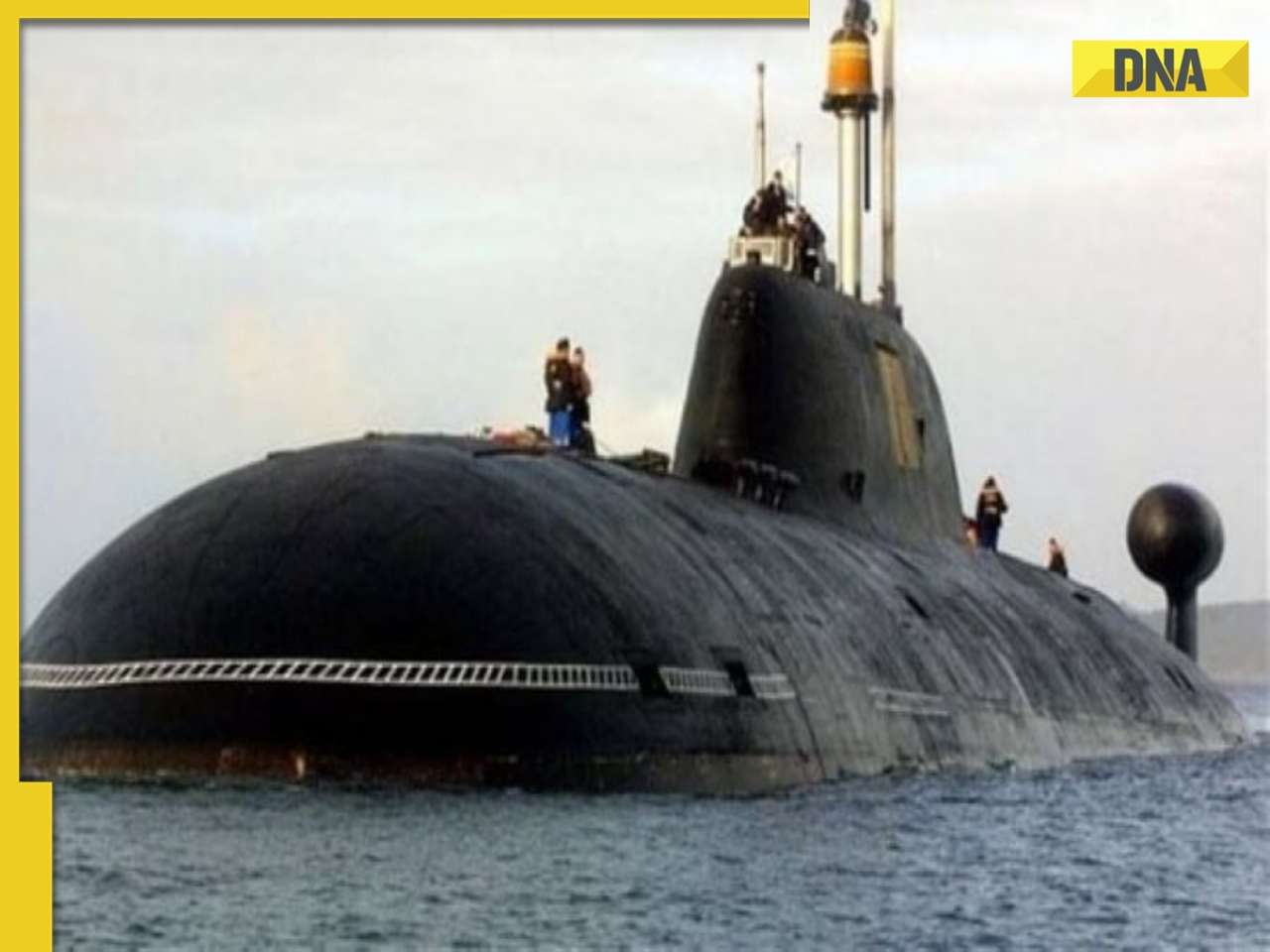Cryogenic fuelled liquid rockets use liquid hydrogen (LH2) as fuel and liquid oxygen (LOX) as oxidizer as we saw earlier. These liquid gases are stored on board at below minus 253 & 183 degree centigrade temperature respectively.
Cryogenic fuelled liquid rockets use liquid hydrogen (LH2) as fuel and liquid oxygen (LOX) as oxidizer as we saw earlier. These liquid gases are stored on board at below minus 253 & 183 degree centigrade temperature respectively.
Semi cryogenic liquid fuelled rockets use earth storable liquid fuel like kerosene and oxidizer LOX. Having understood the basic fuelling system in a rocket it is time now to understand the anatomy of a cryogenic rocket.
Now one can ask a question as to why the hydrogen and oxygen have to be liquefied increasing the complexity. The answer to this question is that there is a limitationof space and size on board. If these gases are stored in their gas form, the size and weight of the rocket will go unimaginably up and the rocket will not lift. By liquefying the gases, storage space on board can be drastically reduced to manageable level.
The cryogenic fuels are stored on board a rocket, in separate tanks. These liquid fuels are pumped out from storage tanks and injected into the combustion chamber in the gaseous form.
The gaseous mixture in combustion chamber is ignited by a pyrotechnic igniter. This process generates high pressure combustion gases which are expelled out through the nozzle connected to the chamber, giving the required thrust to move the rocket body up.
Now the first technological challenge in using cryogenic propulsion system is to produce and harness liquid hydrogen and oxygen in tanker type storage, transport these liquids to the launch site, interim storage at launch site and fill these propellants into the rocket at the time of launch count down.
The most difficult task is to handle hydrogen since it burns with even the slightest trigger of inadvertent ignition. The flame is invisible hence a great safety hazard. The gravity of the hazard can be visualized in the fact that a man will be burning even if no flame is seen.
The tanks are vacuum and thermally insulated to minimize the heat soak from environment. The temperature gradient between inside and outside of the tank walls are of the order of 280 degree centigrade. Many materials become brittle at LH2 temperature.
Welded and sealed joints may crack & leak due to the thermal gradient. Hence selection and development of materials, fabrication technology, and safety systems are some of the important technological challenges.
These technologies are to be developed in house as no country will part with this technology. The complexity in LOX systems is comparatively of lower order; nevertheless similar challenges do exist for LOX systems too. This is about the ground systems.
Onboard cryogenic propulsion system for a rocket can be broadly divided into two major sub-systems ie engine and stage. Both integrated together, along with other rocket systems, make the cryogenic stage.
The important engine subsystems consists of a combustion chamber including the injection & ignition system, a dynamically cooled nozzle, pumps to pump the LOX and LH2 and a turbine to drive the pumps, gas generator to drive the turbine, and electronic real time mixture ratio control system.
The stage system includes basically the onboard storage tanks for LOX andLH2, pressurization & feed systems for these, support structures, plumbing, fluid regulator and valve/safety system, thermal insulation system etc.
Here the mathematical modeling of dynamic fluid & thermal systems & software are some of the important technologically challenging tasks involved. Other technological challenges are the materials and fabrication technology which could sustain the high temperature gradients, dynamic seals and the joints.
India is developing its own cryogenic stage to propel its launch vehicles in the GSLV category and is not very far to achieve the goal. Currently Russian engine is used in Indian launch vehicles.
The cryogenic rocket engine is a classic example of systems engineering, enveloping mechanical, electrical, electronic, chemical, metallurgical, computer and structural engineering. Each of the engineering needs a very high order of specialisation.
Of course system engineering is on the top of all these engineering which integrates all of them along with the project management skills. (Concluded)
![submenu-img]() Meta CEO Mark Zuckerberg spotted wearing watch made from…; it costs over Rs…
Meta CEO Mark Zuckerberg spotted wearing watch made from…; it costs over Rs…![submenu-img]() Indian women's chess team wins historic gold at Chess Olympiad 2024
Indian women's chess team wins historic gold at Chess Olympiad 2024![submenu-img]() Meet cricketer-turned-entrepreneur who built Rs 100 crore company backed by Malaika Arora, Shahid Kapoor, Jennifer Lopez
Meet cricketer-turned-entrepreneur who built Rs 100 crore company backed by Malaika Arora, Shahid Kapoor, Jennifer Lopez![submenu-img]() Vir Das invites budding designers to create his outfit as International Emmy Awards host: 'Not going to wear a...'
Vir Das invites budding designers to create his outfit as International Emmy Awards host: 'Not going to wear a...'![submenu-img]() Who is Anura Kumara Dissanayake, new President of Sri Lanka? All you need to know
Who is Anura Kumara Dissanayake, new President of Sri Lanka? All you need to know![submenu-img]() Child Pornography: 'चाइल्ड पोर्न देखना और स्टोर करना अपराध', SC ने सुनाया बड़ा फैसला
Child Pornography: 'चाइल्ड पोर्न देखना और स्टोर करना अपराध', SC ने सुनाया बड़ा फैसला![submenu-img]() PM Modi ने अमेरिका के राष्ट्रपति Joe Biden को गिफ्ट की ट्रेन, जानें क्या है इसकी खासियत
PM Modi ने अमेरिका के राष्ट्रपति Joe Biden को गिफ्ट की ट्रेन, जानें क्या है इसकी खासियत![submenu-img]() UP News: AMU की फ्रेशर पार्टी में शाकाहारी हिंदू छात्रों को परोसा Chicken Momos, हुआ जमकर हं�गामा
UP News: AMU की फ्रेशर पार्टी में शाकाहारी हिंदू छात्रों को परोसा Chicken Momos, हुआ जमकर हं�गामा![submenu-img]() Brain पर अटैक करता है China में फैल रहा ये नया Virus, जानें कितनी खतरनाक है ये बीमारी
Brain पर अटैक करता है China में फैल रहा ये नया Virus, जानें कितनी खतरनाक है ये बीमारी![submenu-img]() 'वार्ता से निकालें समाधान', इजरायल-हमास युद्ध के बीच फिलिस्तीनी राष्ट्रपति महमूद अब्बास से मिले पीएम मोदी
'वार्ता से निकालें समाधान', इजरायल-हमास युद्ध के बीच फिलिस्तीनी राष्ट्रपति महमूद अब्बास से मिले पीएम मोदी![submenu-img]() Ford to return to India after 2 years with reopening of....
Ford to return to India after 2 years with reopening of....![submenu-img]() Maruti Suzuki launches new Swift CNG, check price, mileage, other features
Maruti Suzuki launches new Swift CNG, check price, mileage, other features![submenu-img]() ‘30 LPA, 3BHK, no in-laws’: Woman earning Rs 1.32 lakh salary lists demands for future husband, netizens say...
‘30 LPA, 3BHK, no in-laws’: Woman earning Rs 1.32 lakh salary lists demands for future husband, netizens say...![submenu-img]() In a big EV push, Centre launches Rs 10900 crore PM E-Drive scheme to replace…
In a big EV push, Centre launches Rs 10900 crore PM E-Drive scheme to replace…![submenu-img]() World’s longest car has helipad, swimming pool, mini-golf course, can seat over…; it cost…
World’s longest car has helipad, swimming pool, mini-golf course, can seat over…; it cost…![submenu-img]() IAS officer Tina Dabi’s schedule shows she studied 11-hour a day; check UPSC topper's marksheet and time table
IAS officer Tina Dabi’s schedule shows she studied 11-hour a day; check UPSC topper's marksheet and time table![submenu-img]() Meet man from Uttar Pradesh who cracked UPSC in first attempt, resigned as IAS officer after 12 years due to...
Meet man from Uttar Pradesh who cracked UPSC in first attempt, resigned as IAS officer after 12 years due to...![submenu-img]() Meet man who once worked as bicycle mechanic, became engineer, then cracked UPSC exam with AIR...
Meet man who once worked as bicycle mechanic, became engineer, then cracked UPSC exam with AIR...![submenu-img]() CBSE registration, LoC submission big update: Important notice for students, check details here...
CBSE registration, LoC submission big update: Important notice for students, check details here...![submenu-img]() CBSE registration, LoC submission big update: Important notice for students, check details here
CBSE registration, LoC submission big update: Important notice for students, check details here![submenu-img]() Congress President Kharge Slams & Opposes 'One Nation, One Election' Proposal, Calls It Impractical
Congress President Kharge Slams & Opposes 'One Nation, One Election' Proposal, Calls It Impractical![submenu-img]() Why 'One Nation One Election' Is important? Ashwini Vaishnaw Explains After It Gets Cabinet Approval
Why 'One Nation One Election' Is important? Ashwini Vaishnaw Explains After It Gets Cabinet Approval![submenu-img]() Jammu Kashmir Assembly Election 2024 Phase 1 Highlights: What Happened In First phase In J&K Polls?
Jammu Kashmir Assembly Election 2024 Phase 1 Highlights: What Happened In First phase In J&K Polls?![submenu-img]() One Nation One Election: Centre Clears Proposal, Bill To Be Introduced In Winter Session | Modi 3.0
One Nation One Election: Centre Clears Proposal, Bill To Be Introduced In Winter Session | Modi 3.0![submenu-img]() Haryana Elections 2024: Is BJP Set To Lose In Haryana? Anti-Incumbency And Other Factors Analysed
Haryana Elections 2024: Is BJP Set To Lose In Haryana? Anti-Incumbency And Other Factors Analysed![submenu-img]() Inside pics of Anant Ambani and Radhika Merchant's Dubai villa gifted by Mukesh Ambani and Nita Ambani, worth Rs…
Inside pics of Anant Ambani and Radhika Merchant's Dubai villa gifted by Mukesh Ambani and Nita Ambani, worth Rs…![submenu-img]() Anupam Mittal’s Playbook: The Secrets Behind Building Iconic Brands
Anupam Mittal’s Playbook: The Secrets Behind Building Iconic Brands![submenu-img]() Meet woman, who came to India as tourist, established Rs 49000 crore firm, know her connection with Ratan Tata
Meet woman, who came to India as tourist, established Rs 49000 crore firm, know her connection with Ratan Tata![submenu-img]() Meet Delhi man, whose street food made him 'crorepati', rides BMW to work, his business is...
Meet Delhi man, whose street food made him 'crorepati', rides BMW to work, his business is...![submenu-img]() Meet man, one of Surat's richest, whose son worked at bakery for Rs 200 a day, gift flats to employees, net worth is...
Meet man, one of Surat's richest, whose son worked at bakery for Rs 200 a day, gift flats to employees, net worth is...![submenu-img]() 8 amazing images of distant galaxies by NASA's Hubble Space Telescope
8 amazing images of distant galaxies by NASA's Hubble Space Telescope![submenu-img]() Most luxurious train rides in the world
Most luxurious train rides in the world ![submenu-img]() This star was called ugly child, filed case against mother, slapped Sanjeev Kumar; her husband was burnt alive at...
This star was called ugly child, filed case against mother, slapped Sanjeev Kumar; her husband was burnt alive at...![submenu-img]() 7 foods that can add extra years to your life
7 foods that can add extra years to your life![submenu-img]() In pics: Triptii Dimri sets the stage on fire, raises the temperature in green slit lehenga
In pics: Triptii Dimri sets the stage on fire, raises the temperature in green slit lehenga![submenu-img]() Bystander Intervention: Powerful Tool for Combating Gender-Based Violence AsWellAs Saving Victims of Road Accidents
Bystander Intervention: Powerful Tool for Combating Gender-Based Violence AsWellAs Saving Victims of Road Accidents ![submenu-img]() Uday Bhanu Chib appointed Indian Youth Congress Chief, succeeds Srinivas BV
Uday Bhanu Chib appointed Indian Youth Congress Chief, succeeds Srinivas BV![submenu-img]() Mamata Banerjee writes second letter to PM Modi on devastating 'man-made' flood in South Bengal
Mamata Banerjee writes second letter to PM Modi on devastating 'man-made' flood in South Bengal![submenu-img]() Arighat's Rise: India's Nuclear Might in a Godless World
Arighat's Rise: India's Nuclear Might in a Godless World![submenu-img]() PIL in Supreme Court seeks SIT probe into Tirupati laddu row
PIL in Supreme Court seeks SIT probe into Tirupati laddu row














































)
)
)
)
)
)
)
)
)
)
)
)
)
)





)
)
)
)
)
)